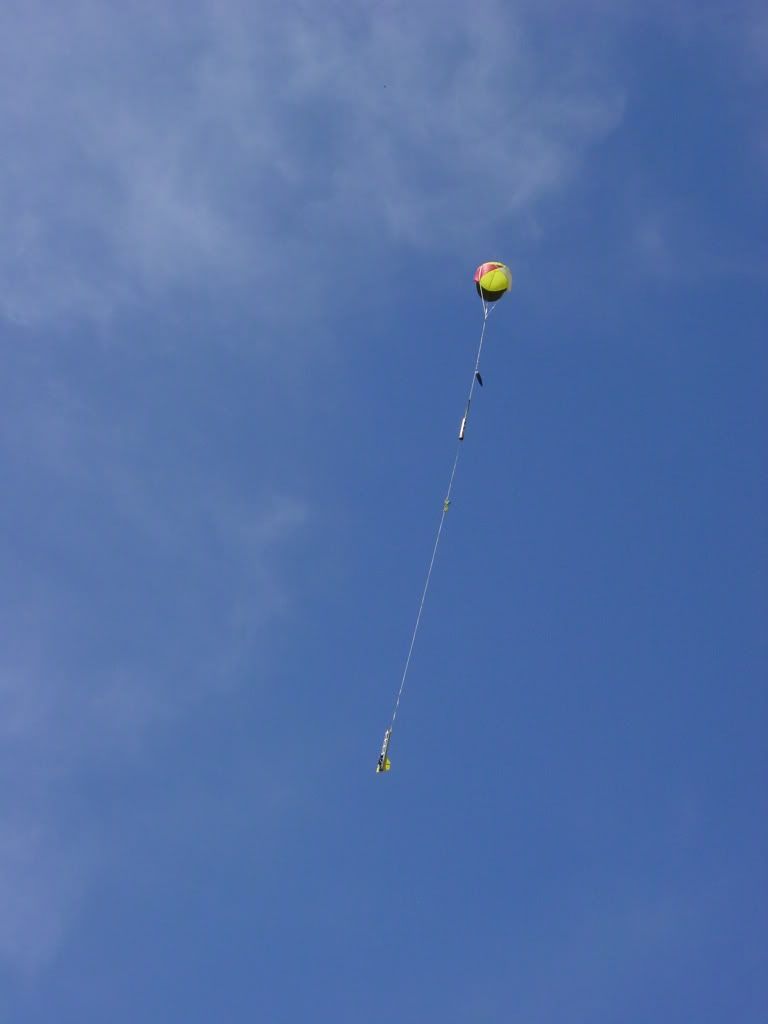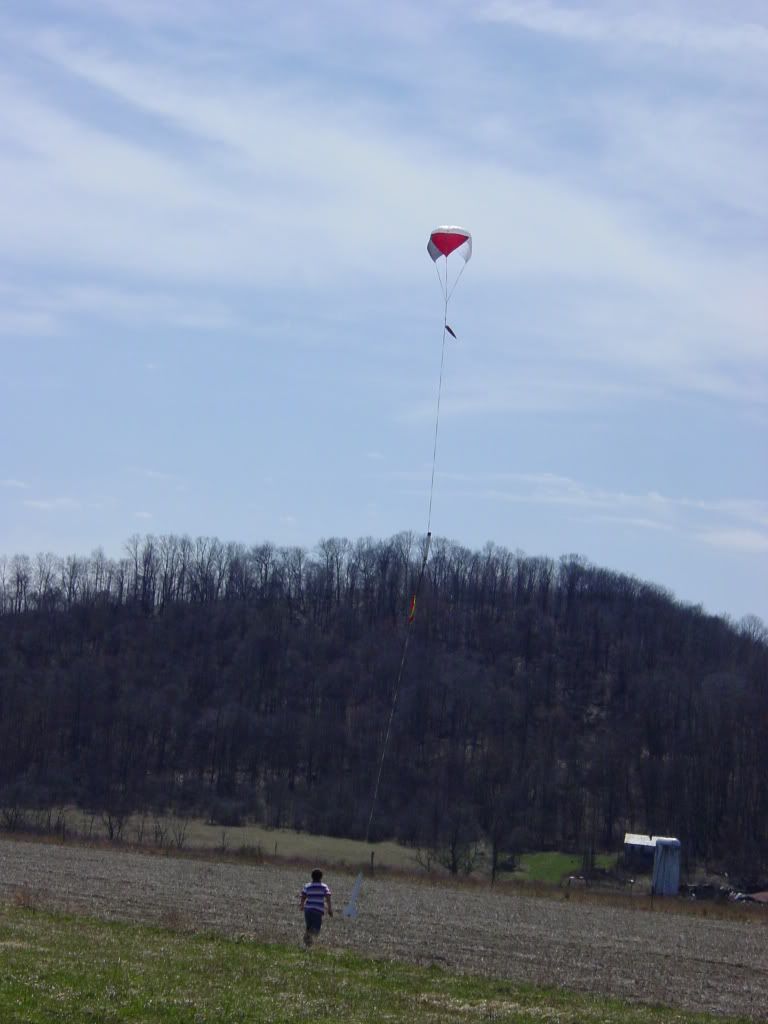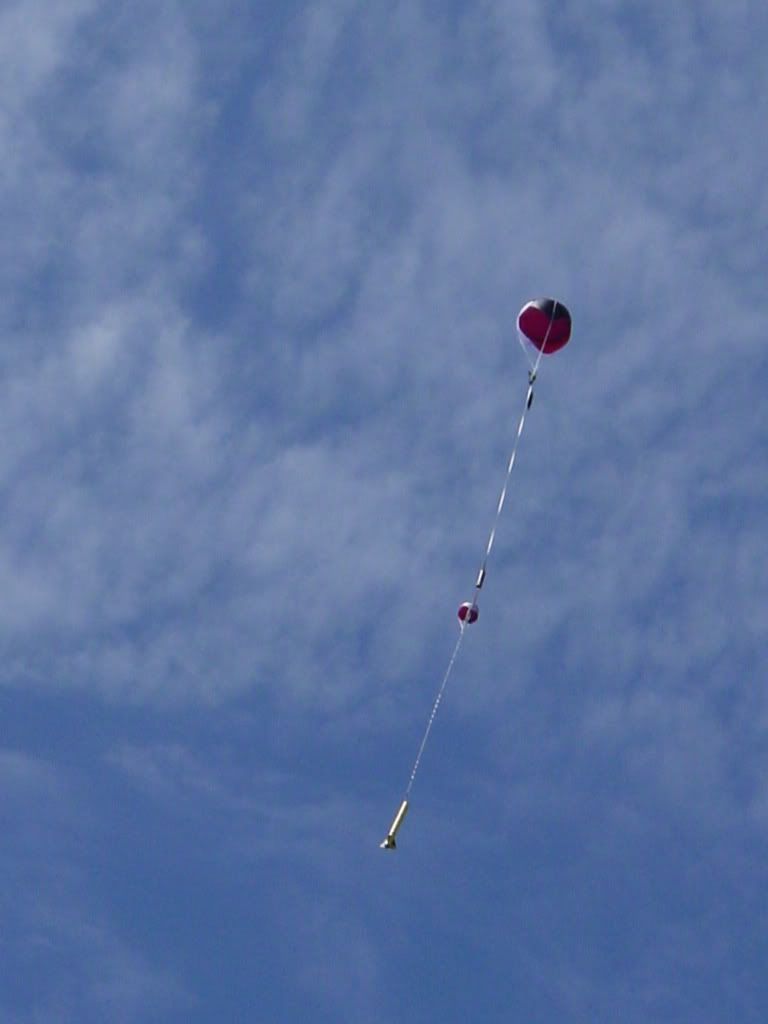Viperfixr
Born Again Rocketeer
- Joined
- Jan 19, 2009
- Messages
- 1,474
- Reaction score
- 73
I flew my 3rd dual deployment flight Saturday, and while it went off without a hitch again, I did notice the two halves of my BSD 38 Special were flying about without much if any stability, trading places without any one part leading or following. Upon recovery, I saw a couple places where the paint was gone from a tube to tube hit  . I am using 20' of kevlar recovery harness between the two sections.
. I am using 20' of kevlar recovery harness between the two sections.
I did buy a Sky Angle DD streamer and connected it to the upper section's u-bolt, but it does not seem to do anything in flight...hardly visible and certainly did not effect the stability at all.
An easy answer would be to extend the recovery harness. But, I saw another flight Saturday from Wolfstar's Thor X where a drogue was connected to the upper half and held the entire assembly in a very stable decent without tumbling about. It also seemed to fall at least as fast despite the drogue. That got me to wondering if that wasn't a better way to go overall.
The question is: do you use a drogue or not. And, if you do, what did you use for one? If you do not, why?
I did buy a Sky Angle DD streamer and connected it to the upper section's u-bolt, but it does not seem to do anything in flight...hardly visible and certainly did not effect the stability at all.
An easy answer would be to extend the recovery harness. But, I saw another flight Saturday from Wolfstar's Thor X where a drogue was connected to the upper half and held the entire assembly in a very stable decent without tumbling about. It also seemed to fall at least as fast despite the drogue. That got me to wondering if that wasn't a better way to go overall.
The question is: do you use a drogue or not. And, if you do, what did you use for one? If you do not, why?
Last edited:








